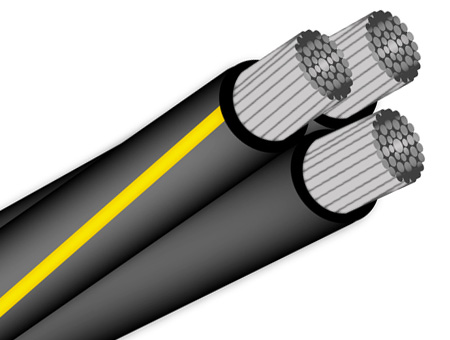Comprehensive Guide: What is Triplex Wires Made of?

Introduction
Triplex wires play a crucial role in electrical systems, particularly in the distribution of power across various applications. Understanding the composition of these wires is essential for anyone involved in the electrical industry or those seeking insights into the materials that make up these vital components. In this comprehensive guide, we will delve into the intricacies of triplex wires, exploring their composition, materials, and applications.
Triplex Wires: A Brief Overview
Triplex wires are a type of electrical cable consisting of three conductors bundled together. These conductors are typically made of aluminum or copper and are design to handle different aspects of power distribution. The unique structure of triplex wires makes them suitable for specific applications, including overhead power lines and utility poles.
The Core Components
1. Conductors
The conductors in triplex wires are the lifelines of the system, facilitating the flow of electricity. Aluminum is a common choice due to its lightweight nature and cost-effectiveness. However, copper is also used for its superior conductivity. The combination of these materials provides a balance between efficiency and affordability.
2. Insulation
Insulation is a critical component of triplex wires, serving to protect the conductors from environmental factors such as moisture and abrasion. Common insulation materials include cross-linked polyethylene (XLPE) and polyethylene (PE). These materials enhance the durability and longevity of the wires, ensuring they can withstand harsh conditions.
3. Neutral Messenger
Triplex wires often include a neutral messenger wire, which provides additional support and stability. This wire is usually made of the same material as the conductors and helps balance the load across the system. It plays a crucial role in maintaining the structural integrity of the entire setup.
Applications of Triplex Wires
Triplex wires have diverse applications across various industries due to their unique design and characteristics. Here are some notable applications of triplex wires:
Overhead Power Distribution:
Triplex wires play a common role in overhead power distribution systems. Their robust construction, incorporating multiple conductors and insulation, makes them well-suited for transmitting electrical power over long distances.
Utility Poles:
These wires extensively serve the installation of utility poles. The neutral messenger component provides structural support, enabling the wires to string between poles and ensuring the effective and safe distribution of power across different locations.
Residential Wiring:
Triplex wires find use in residential settings for various applications. They often serve as service entrance conductors, connecting the main power lines to individual households. Their design facilitates efficient power distribution within homes.
Street Lighting:
Triplex wires are frequently the choice for street lighting systems. Their robust composition ensures that they can withstand outdoor conditions, providing a reliable power source for streetlights along roads and pathways.
Agricultural and Rural Areas:
In rural and agricultural areas, triplex wires commonly provide power to remote locations. The overhead installation and robust design make them suitable for distributing electricity across vast expanses, reaching areas where underground wiring may not be practical.
Temporary Power Installations:
Triplex wires find employment in temporary power installations for events, construction sites, or emergency situations. Their versatility and ease of installation make them a practical choice for quickly setting up power distribution systems in temporary locations.
Commercial and Industrial Applications:
In commercial and industrial settings, triplex wires may be used for specific applications requiring overhead power distribution. This can include powering machinery, lighting large spaces, or providing electricity to outdoor equipment.
Outdoor Recreational Areas:
Triplex wires are suitable for providing power to outdoor recreational areas such as parks, campgrounds, and recreational vehicle (RV) sites. Their durable construction ensures reliable power distribution in outdoor environments.
Public Infrastructure Projects:
Triplex wires often integrate into public infrastructure projects where overhead power distribution is a practical solution. This includes the electrification of bridges, tunnels, and other structures where underground wiring may be challenging.
Renewable Energy Projects:
In renewable energy projects, triplex wires may connect power generated from sources like solar or wind to the larger electrical grid. Their design allows for the efficient transmission of electricity from renewable sources to distribution points.
Environmental Considerations
Triplex wires are design with environmental considerations in mind. The choice of materials and insulation helps mitigate the impact of weather conditions, ensuring the wires remain reliable even in challenging situations. Additionally, the recyclability of aluminum contributes to the overall sustainability of these wires.
Conclusion
In conclusion, triplex wires are a vital component of electrical systems, with their composition carefully crafted to meet specific needs. Understanding the materials involved, such as the conductors, insulation, and neutral messenger, provides insight into the reliability and functionality of these wires. Whether used for overhead power lines, utility poles, or residential wiring, triplex wires play a crucial role in powering our everyday lives.
As technology and materials continue to advance, the future of triplex wires holds exciting possibilities, promising even more efficient and sustainable solutions for the ever-growing demands of the electrical industry.







